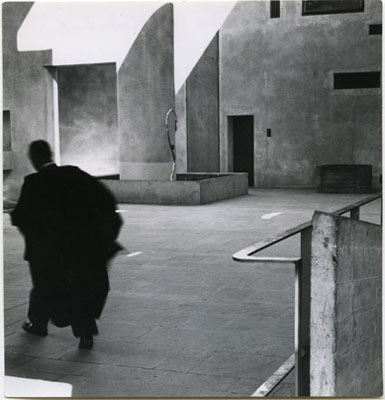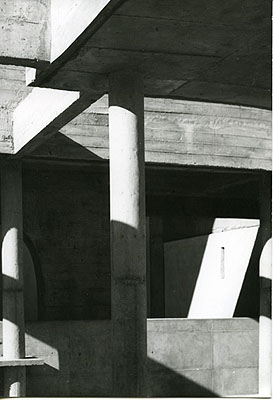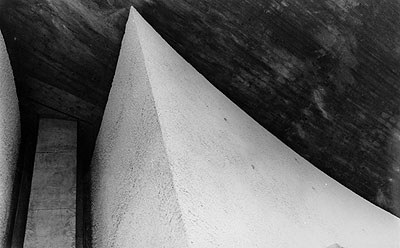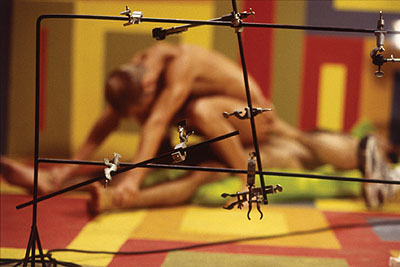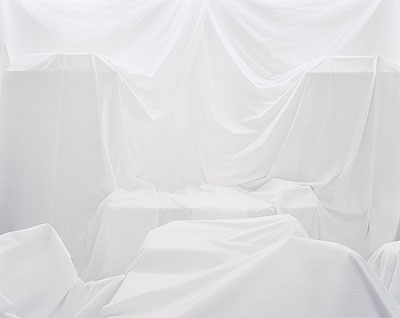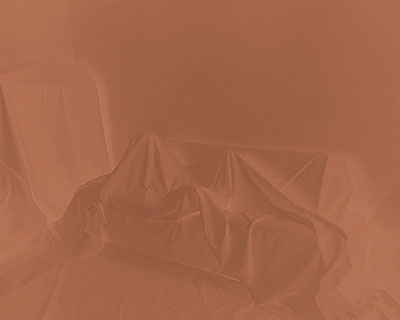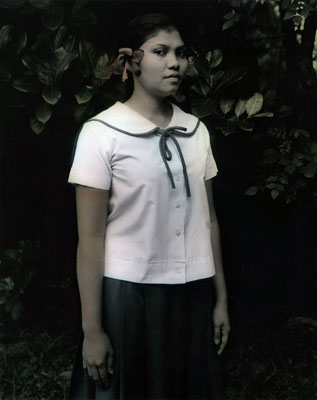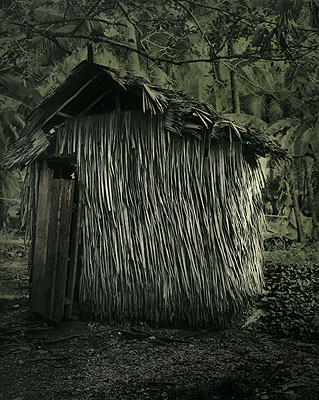CONSTELLATION SELECTS
In light of CPW's mission to discover and present new talent, we invited artists from Constellation to select artists whom they feel are making a significant mark in contemporary photography.

Cathy Spence, stirringofbirds 1997. Asphaltum stained gelatin silver print
Cathy Spence, CATHY SPENCE, selected by Keith Carter, received her BA in Fine Art from Lamar University in Beaumont, Texas. She was awarded a Houston Center for Photography Fellowship in 1998 and has shown at Photographs Do Not Bend Gallery in Dallas and Stephen Clark Gallery in Austin. She has prints in the collections of the Museum of Fine Arts Houston and the Witcliff Collection of Southwestern and Mexican Photography.
Because of my interest in the history of photography, I have become intrigued with portraits from the era of the Daguerreotypes to the images of the mid-twentieth century. Julia Margaret Cameron, Lady Clementina Hawardine, E.J. Bellocq, and many other anonymous portraitists have had great influence on my work. In studying images of these photographers, I have become aware of the poor condition some of the prints are now in and how the damage only adds to the expressiveness of the images. No other art form has the innate ability to address the issue of time like photography; not only by halting a moment, but in the aging process of the actual print. The tatters and tears of an image reveal its history like the yellowed and dog-eared pages of a well read book.

CAMILLE SOLYAGUA, Botanical Works Study 14 1995. Sepia gelatin silver print
CAMILLE SOLYAGUA, selected by Ruth Bernhard, lives and works in San Francisco, CA. She attended the Academy of Art College in San Francisco and Middlebury College in Vermont and Madrid, Spain. She has shown her work in California at the Joseph Bellows Gallery in La Jolla, Michael Shapiro Gallery in San Francisco, and the Center for Photographic Arts in Carmel. Her photographs are in collections at the Los Angeles County Museum and the Museum of Fine Arts in Houston.
“Camille observes with care, curiosity, and feeling. She photographs with passion and intensity, inviting us to share in the experience of viewing the wonderful secrets she has discovered. Her images clearly profess her love for the universal order. They transcend casual observation, revealing to us her awareness of, and reverence for, the processes and transitions between life and death. We see through her eyes things we might never notice.” - Ruth Bernhard, 1997

MIWA NISHIO, Untitled 002, 2001, Giclee print
MIWA NISHIO was selected by Joyce Tenneson. Born in Japan, Miwa made her decision to move to NYC when she was just ten years old. Her dream came true when she was accepted to New York University. After graduating with honors, she made another decision to pursue a career in fashion photography. By a stroke of luck she encountered the photographer Joyce Tenneson, with whom she has been working closely for the last four years. Miwa Nishio’s work has been published in avant garde magazines including Tank and Paper. She continues to follow her dreams in fashion and music in the Big Apple.

PAUL TAGGART, NCCF Correctional Facility, Iowa 2001. Giclee print
PAUL TAGGART, selected by Christopher James, studies photography at the Art Institute of Boston and has taken workshops with Antonin Kratochvil and Mary Ellen Mark. He has photographed for PBS documentaries and the Farm Institute on Martha’s Vineyard. He lives in Cambridge, MA.
Corrections / United States/ These photographs, taken at the Iowa Department of Corrections – North Central Correctional Facility located in Rockwell City, Iowa and Iowa State Penitentiary, are an attempt to examine the correctional system in the United States, from juvenile facilities to adult and prerelease programs. I am interested in raising questions more than answering them. With a higher percent of our population incarcerated than in any other country in the world, the public needs to be made aware in order to reexamine how we handle corrections. Something is obviously not working. Everyday prison populations are rising while crime rates are not falling relatively, is incarceration a productive avenue? Along with photographing within the walls of correctional institutions, I am interested in photographing victim’s families to see the full impact of crime on our culture. The judicial, correctional, rehabilitation, prerelease, and families of both criminals and victims are paramount to telling this story.

JODIE VICENTA JACOBSON, Paonia, Colorado 2002. C-print
JODIE VICENTA JACOBSON, selected by Andrea Modica, is currently working toward her MFA at Hunter College in NYC. She received her BA in Studio Arts from Colorado College in 1999 and was a Woodstock Photography Workshop intern that same year. She has worked with numerous galleries including Robert Mann, Yancey Richardson, and John Stevenson, all in NYC, and is presently a teaching assistant to Lois Connor and Roy DeCarava, both at Hunter. Prior to this show she has shown at Princeton University.
With the same human intuition that compels me to eat, sleep, have sex, and breathe, I make photographs. From the moment I was given my grandfather's camera, I became engaged in a love affair with the frame. Making pictures is a part of my everyday life. It is the subtle beauty of my daily experience that compels me to capture what would otherwise go unnoticed. I find aesthetic virtue in the ordinary, while simultaneously seeing beauty in highly personal engagements. I see my pictures as formally reconciled compositions dedicated to the human experience and the overlooked poetics of light, shade, color and mood that exist in our very homes, streets, landscapes and families. As I see it, the fragmented nature of the human consciousness is reflected in how I react to what presents itself to me as interesting and possible subject matter…
…
http://www.cpw.org/exhibitions/2002/Con ... ation.html




















